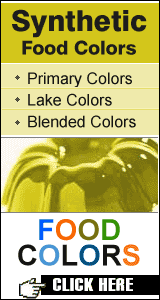As is said that except the food grown in your own
garden, all food products have preservatives. Every manufacturer adds
preservative to the food during processing. The purpose is generally to
avoid spoilageduring the transportation time.
Because food is so important to survival, food preservation is one of the
oldest technologies used by human beings. Different ways and means have been
found and improved for the purpose. Boiling, freezing & refrigeration,
pasteurizing, dehydrating, pickling are the traditional few. Sugar and salt
are also often used as preservatives. Neuclear radiation is also being used
now. Modified packaging techniques like vacuum packing and hypobaric packing
also work as preservatives.
Chemical preservatives are also being used for quite some time now. They
seem to be the best and the most effective for a longer shelf life and are
generally fool proof for the preservation purpose.
- Benzoates (such as sodium benzoate, benzoic acid)
- Nitrites (such as sodium nitrite)
- Sulphites (such as sulphur dioxide),
- Sorbates (such as sodium sorbate, potassium sorbate
|
All of these chemicals act as either antimicrobials or antioxidants
or both. They either inhibit the activity of or kill the bacteria, molds,
insects and other microorganisms. Antimicrobials, prevent the growth of
molds, yeasts and bacteria and antioxidants keep foods from becoming rancid
or developing black spots. They suppress the reaction when foods comes in
contact with oxygen, heat, and some metals. They also prevent the loss of
some essential amino acids some vitamins.
Some common preservatives and their primary activity
| Chemical Affected |
Organism(s) |
Action |
Use in Foods |
| Sulfites |
Insects & Microorganisms |
Antioxidant |
Dried Fruits, Wine, Juice |
| Sodium Nitrite |
Clostridia |
Antimicrobial |
Cured Meats |
| Propionic Acid |
Molds |
Antimicrobial |
Bread, Cakes, Cheeses |
| Sorbic Acid |
Molds |
Antimicrobial |
Cheeses, Cakes, Salad Dressing |
| Benzoic Acid |
Yeasts & Molds |
Antimicrobial |
Soft Drinks, Ketchup, Salad
Dressings |
There are other antioxidants like Sodium Erythorbate, Erythorbic Acid,
Sodium Diacetate, Sodium Succinate, Grape Seed Extract, Pine Bark Extract,
Apple Extract Tea Proplyphenols, Succinic Acid and Ascorbic Acid and
preservatives like Parabens and Sodium Dehydro Acetate used frequently for
preservation.




